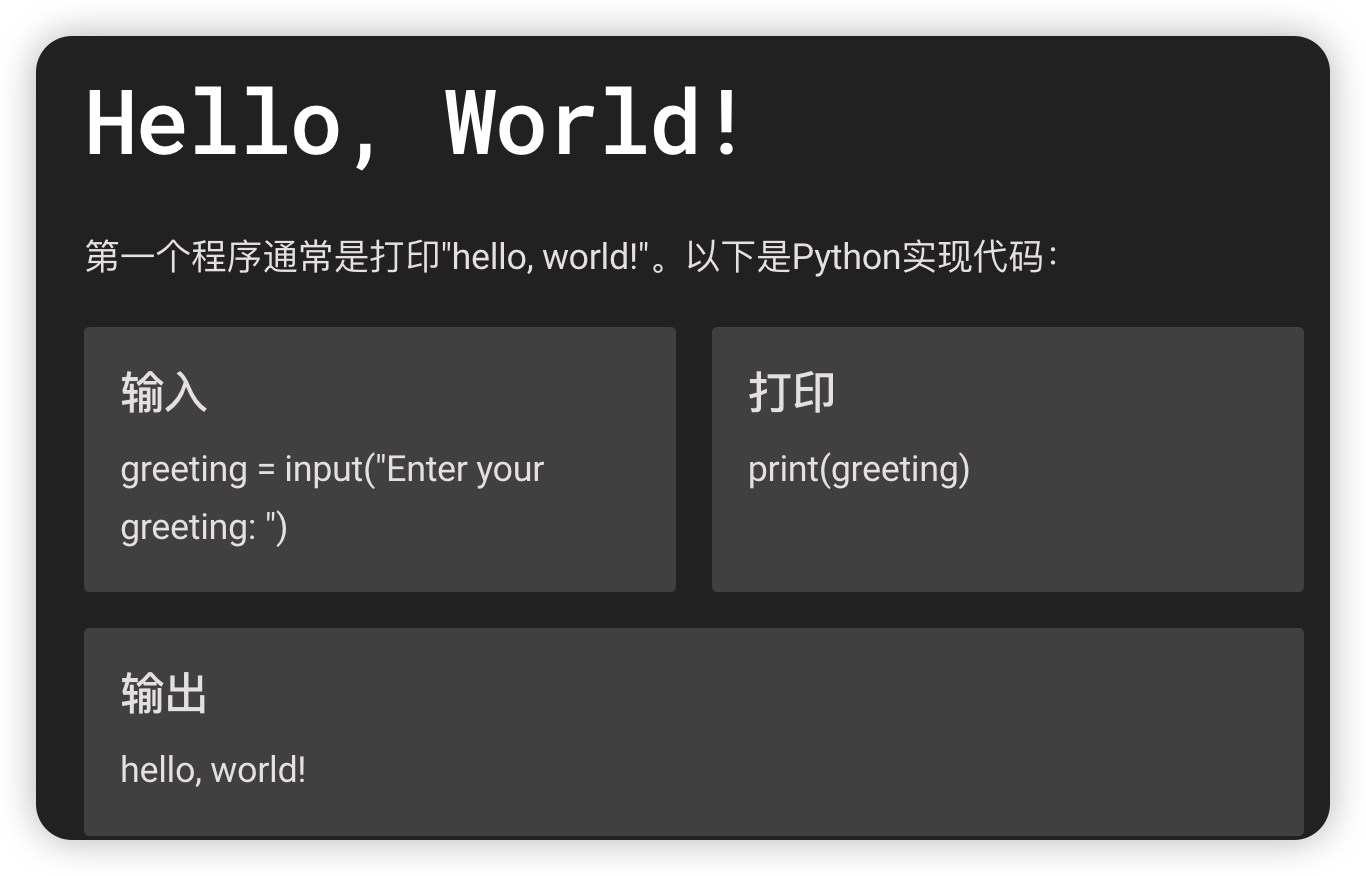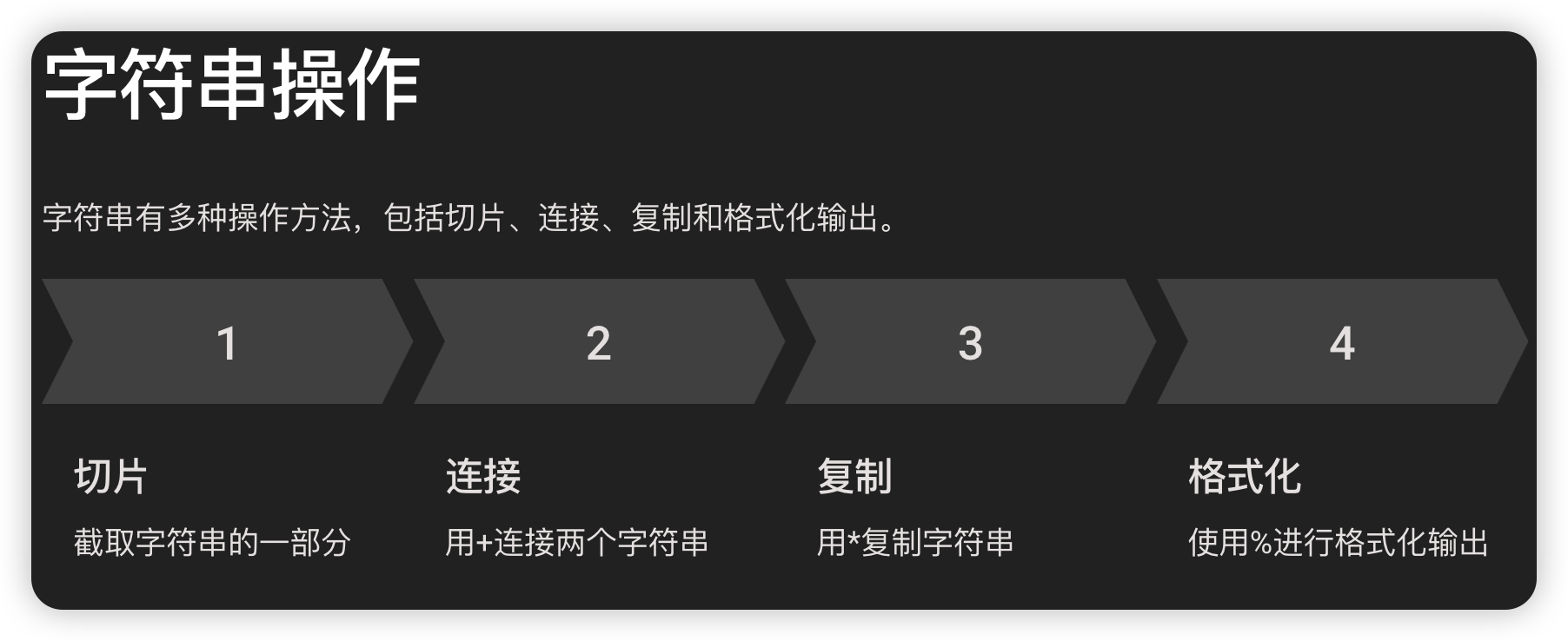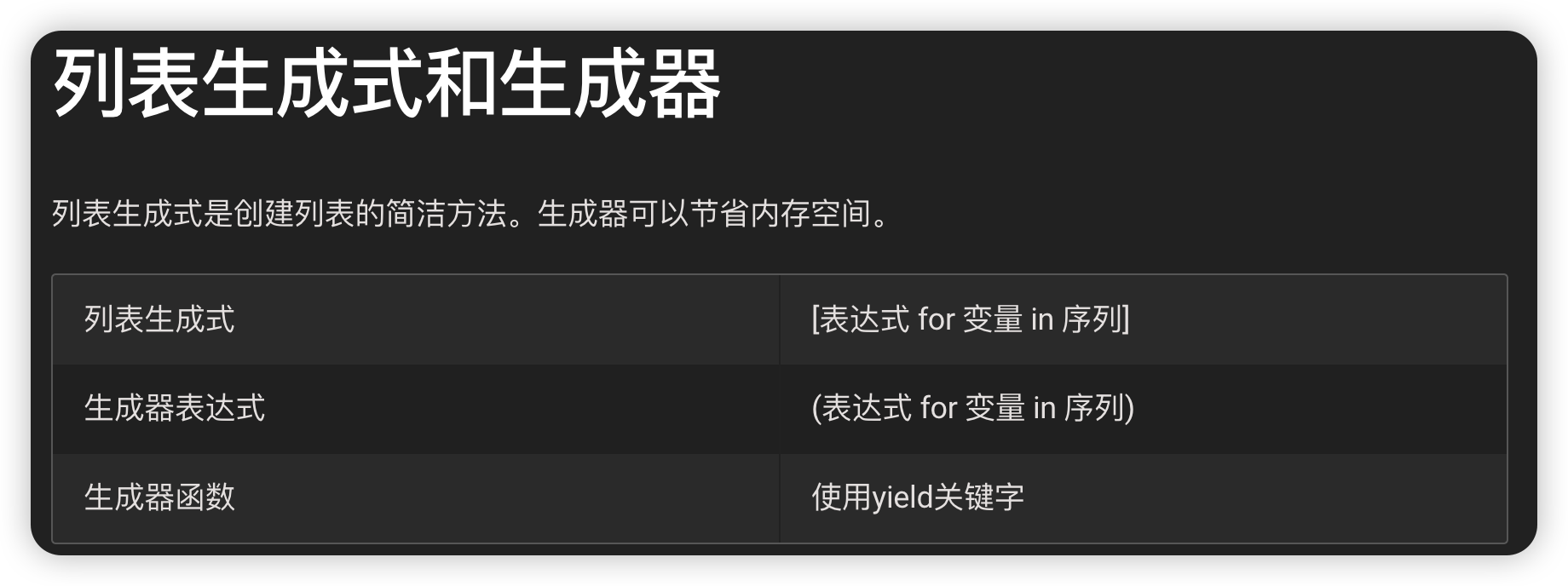Python有很多功能强大的机器学习和大数据分析包,适合对大数据和人工智能感兴趣的同学学习。要想了解一门语言,首先需要了解它的语法。本文将介绍Python的一些基础语法,包括数据类型、变量类型、条件控制、循环结构等内容。废话少说,Here we go!

目录
快速开始
首先,你需要在你的电脑上安装Python。安装过程非常简单,访问Python官网下载适合你系统的版本并安装。安装好后,你可以在命令行中键入命令python进入交互模式,也可以使用你喜欢的文本编辑器编写Python脚本,然后在命令行中执行。

Hello, World!

几乎所有的编程语言的第一个程序都是打印"hello, world!"。以下是Python中的实现代码:
python
greeting = input("Enter your greeting: ") # 从键盘中输入
print(greeting) # 打印输入内容在Python3中,print后面一定要加括号。你也可以将脚本保存为hello.py,然后在命令行中执行python3 hello.py。输出如下:
hello, world!数据类型
Python的语法简单的一个方面是它不需要声明变量类型。直接用=给变量赋值后,变量就被创建了。以下是Python中常见的数据类型:

数字 (Number)
Python支持整数(int),浮点型(float),布尔型(bool)以及复数型(complex)。可以用type()函数来判断变量类型:
python
a, b, c, d = 10, 5.5, False, 2+5j
print(type(a)) # 输出:<class 'int'>
print(type(b)) # 输出:<class 'float'>
print(type(c)) # 输出:<class 'bool'>
print(type(d)) # 输出:<class 'complex'>字符串 (String)

字符串用单引号' '或者双引号" "括起来的任意字符表示。例如:
python
str1 = 'hello, world'
str2 = "hello, world"常用字符串操作
- 切片:字符串可以方便地截取其中一部分。索引从0开始,负索引从-1开始。
python
str = "python"
print(str[0]) # 输出:p
print(str[2:4]) # 输出:th- 连接和复制 :用
+连接两个字符串,用*复制字符串。
python
str1 = "hello"
str2 = "world"
print(str1 + " " + str2) # 输出:hello world
print(str1 * 3) # 输出:hellohellohello- 多行输出 :用
'''...'''格式输出多行字符串。
python
print('''line1
line2
line3''')- 格式化输出 :类似C语言的
printf。
python
name = "Mike"
age = 16
print("My name is %s and I'm %d years old" % (name, age))数据结构
列表 (List)
列表是Python中最重要的类型之一,用方括号[]表示,元素用逗号隔开。列表的常用操作包括:
python
list = [10, "python", 8.2]
list1 = list[0:2]
list2 = list[1:]
list3 = list * 2
print("python" in list) # 输出:True常用内置函数
python
list = [10, 20, 30, 40]
print(len(list)) # 列表长度
print(max(list)) # 最大值
print(min(list)) # 最小值
list.append(50) # 添加元素
list.pop() # 删除末尾元素
print(list)元组 (Tuple)
元组和列表类似,但元组中的元素不能修改,用小括号()表示。
python
tuple1 = (8, "tuple", 6.6)
print(tuple1[1]) # 输出:tuple字典 (Dictionary)
字典是无序的键值对集合,用大括号{}表示。
python
dic = {"name": "John", "age": 25}
print(dic["name"]) # 输出:John常用内置函数
python
dic = {"name": "John", "age": 25}
print(dic.keys()) # 输出所有键
print(dic.values()) # 输出所有值
dic.pop("age") # 删除键"age"
print(dic)集合 (Set)
集合是无序且不重复的元素集合,用大括号{}或者set()函数创建。
python
num = {1, 2, 3, 4}
num.add(5) # 添加元素
num.remove(3) # 删除元素
print(num)条件判断
条件判断非常简单,例如:
python
num = 10
if num > 0:
print("positive number!")
elif num < 0:
print("negative number!")
else:
print("zero!")循环控制
Python主要有两种循环:for...in循环和while循环。

for...in循环
可以遍历列表、元组、字符串等。
python
names = ["John", "Mike", "Bob"]
for name in names:
print(name)
sum = 0
for i in range(101):
sum += i
print(sum)while循环
python
n = 10
sum = 0
while n > 0:
n -= 1
sum += n
print(sum)break和continue
python
for i in range(10):
if i == 5:
break
print(i)
for i in range(10):
if i == 5:
continue
print(i)迭代器和生成器

列表生成式
python
list1 = [2 * a for a in range(10)]
list2 = [a * b for a in range(3) for b in range(4)]
list3 = [2 * a for a in range(10) if a % 2 == 1]
print(list1)
print(list2)
print(list3)生成器
python
generator1 = (2 * a for a in range(10))
for n in generator1:
print(n)
def cube(num1, num2):
for i in range(num1, num2):
yield i ** 3
g = cube(3, 8)
for n in g:
print(n)迭代器

python
from collections import Iterable
print(isinstance([], Iterable)) # 输出:True
print(isinstance(iter([]), Iterable)) # 输出:True以上是Python3最核心最基本的语法,后面会继续更新Python高级知识,祝大家学习愉快!